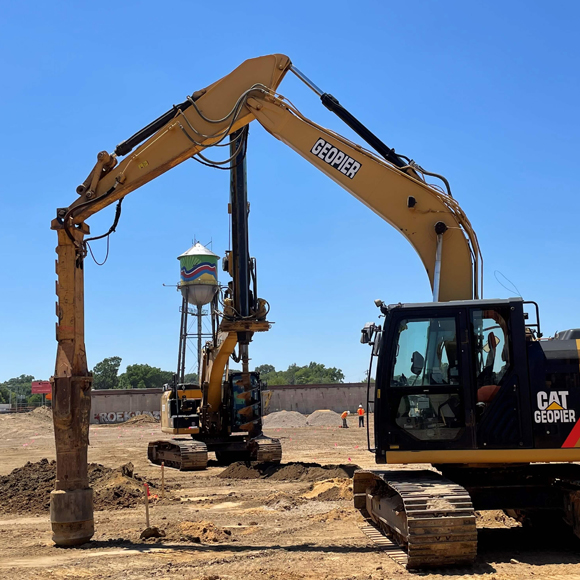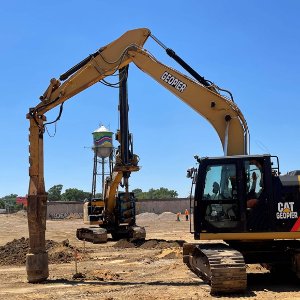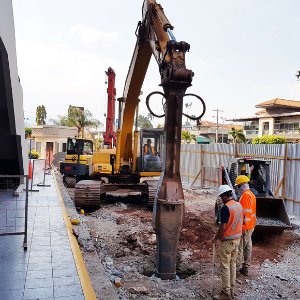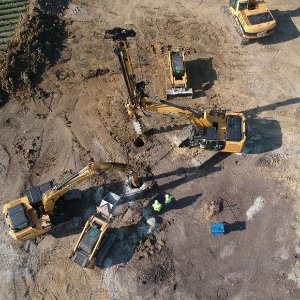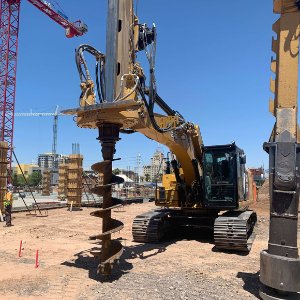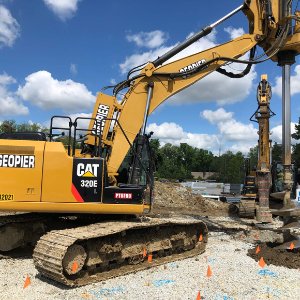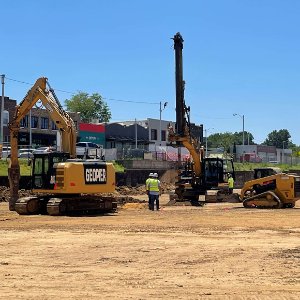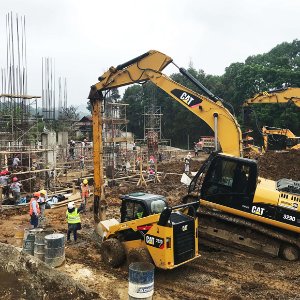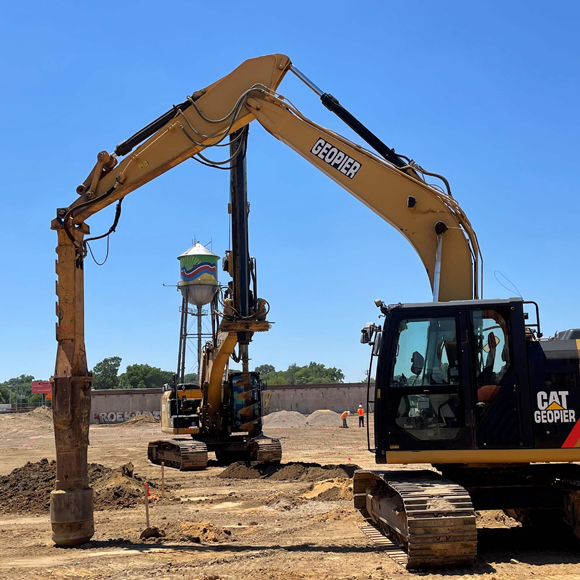
GP3® System
- Ideal for non-caving soils
- Rapid installation (schedule savings)
- 20-50% savings versus deep foundations and over-excavation
- Minimal spoils and haul-off costs
The Geopier GP3® pier system is the primary “drill and fill” solution. This system is ideal for non-caving soils that stay open during drilling. GP3 piers are constructed using a track-mounted auger to drill out unsuitable soils and a patented track-mounted tamper to construct the Rammed Aggregate Pier (RAP) elements. The end result is a dense column of aggregate surrounded by stiffened matrix soils that provide excellent settlement control and allow for higher bearing capacities. The GP3 system is one of Geopier’s oldest systems, with several thousand successful projects in the ground.
- Non-caving soils such as clays, silts, and sands with high fines content
- Caving soils with the use of temporary casing
- Organic soils using cemented treated aggregate (CTA)
The Geopier GP3® installation process consists of drilling out unsuitable soils to a desired design depth and then constructing a dense column of aggregate using a patented tamper. The pier is constructed in 2-foot-thick lifts using well-graded aggregate, open-graded aggregate, or sand. The installation process imparts significant lateral pressures into the adjacent matrix soil, which creates excellent coupling and stiffens the soil.
Fill out the form below to download specifications.

